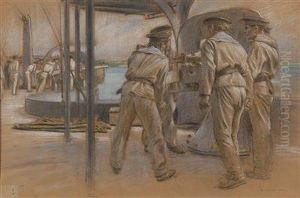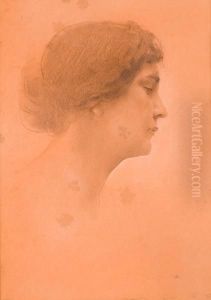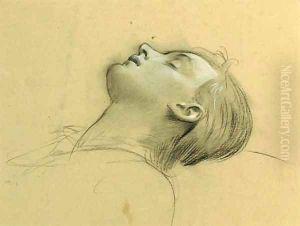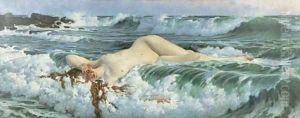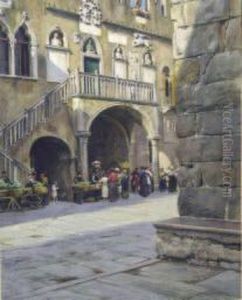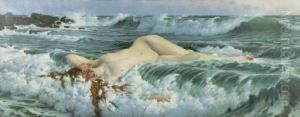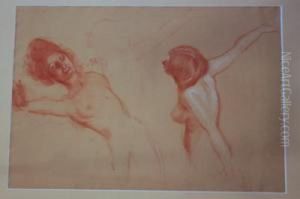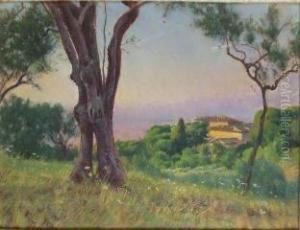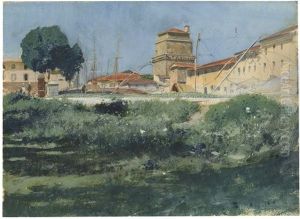Adolf Hiremy-Hirschl Paintings
Adolf Hiremy-Hirschl was a notable Austro-Hungarian painter who gained recognition during the late 19th and early 20th centuries. He was born on January 31, 1860, in Temesvár, then part of the Austro-Hungarian Empire (today Timișoara, Romania). Hiremy-Hirschl was known for his historical and mythological paintings, which often featured dramatic scenes and classical themes.
Initially, his talent was recognized in his youth, and he received a scholarship to the Academy of Fine Arts in Vienna at the young age of 15. There, he was a student of August Eisenmenger and later of Christian Griepenkerl. Hiremy-Hirschl quickly distinguished himself as a talented artist and began exhibiting his work.
His style was heavily influenced by Academic art and Symbolism, and he achieved significant success with his painting 'The Souls of Acheron' in 1898, which is considered one of his masterpieces. This work reflects his interest in the afterlife and mythology, and it was very well received, earning him a gold medal at the Vienna Secession's first exhibition.
Despite his success, he faced financial difficulties later in life, primarily due to the changing trends in art which moved away from the Academic style that he had mastered towards Modernism. Nonetheless, he continued to work, creating large-scale paintings with elaborate compositions.
Adolf Hiremy-Hirschl moved to Rome in 1899 where he continued to paint and where he spent the rest of his life. His later works often incorporated elements from his surroundings, including the Roman landscape and classical ruins, which served as a backdrop for many of his mythological scenes.
He died on February 7, 1933, in Rome, and although his work was less known after his death, his paintings have been rediscovered and appreciated in more recent times for their technical skill and evocative use of mythology and history.















